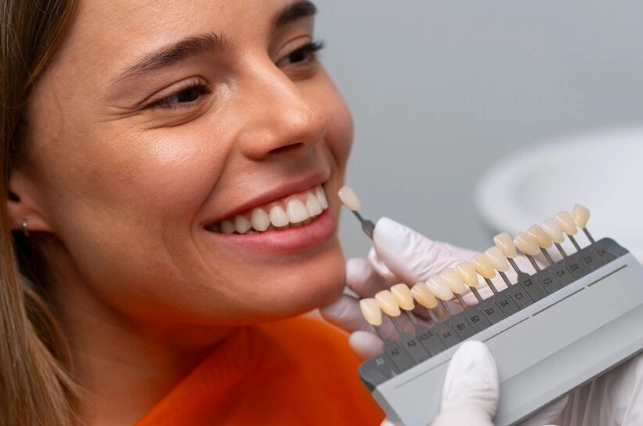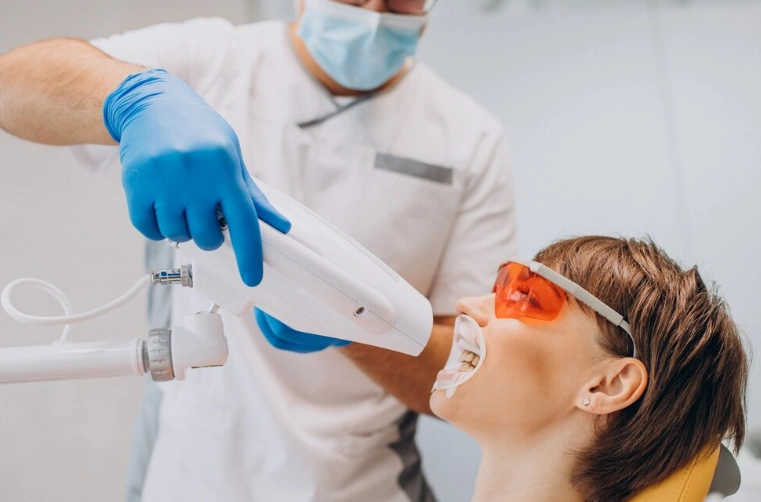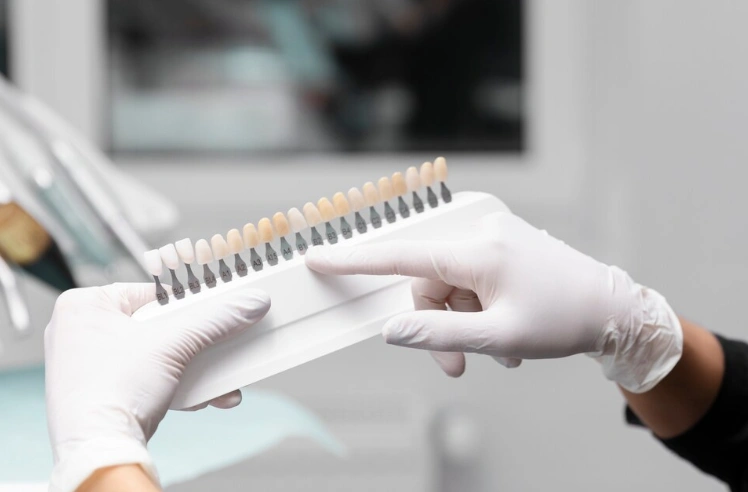Teeth Whitening Strips: Are They Safe?

If you’ve ever googled “how to get white teeth fast,” chances are you’ve come across a million ads for whitening strips. They promise to brighten your teeth to a level where they’re good to walk a red carpet in just a few days, and they’re everywhere: you can find them in the pharmacy, and they’re also a known “must-have” for many influencers. But let’s slow down for a second. Are teeth whitening strips really safe? And more importantly, do they suit your teeth?
Here is the fact: teeth whitening strips are effective on the condition you use them properly. Similar to maintaining skin health, overusing or using an unsuitable product can cause not only no visible improvement but also damage. So, if you want to make them a part of your beauty ritual, keep on reading to know what the safe way to whiten looks like—and whether it’s worth giving your smile that extra sparkle. Obviously, brighter, expertly managed results arrive if you have a mouthful of Lema Dental Clinic‘s advanced teeth whitening treatment, which is the starting place of your perfect smile.
What are Teeth Whitening Strips?

Teeth whitening strips are very thin plastic strips that are completely transparent and have a film of tooth whitening gel on them, which usually consists of hydrogen peroxide or carbamide peroxide. These are simple and easy-to-use low-dose versions of professional dental whitening products. The practice is very simple – you apply the strips to your teeth, set the timer for 5 to 30 minutes, and perform the whole operation from 7 to 14 days without a break.
These teeth whitening strips are advertised as a fast solution for teeth becoming yellow or stained due to specific causes, e.g., coffee, tea, soda, smoking, and age. To be honest, the outcome is impressive. They are not expensive, convenient to use, and do not require a dentist’s consultation. However, no matter how easily accessible they are, one should still handle them with care.
Potential Risks and Side Effects of Whitening Strips
Let us start by saying that teeth whitening strips are generally considered safe to use, provided that the directions are followed. However, if not used properly or if overused, they can have undesirable side effects.
- Tooth Sensitivity: Most probably the prevalent side effect, and usually occurs with teeth that have thin or fractured enamel, whitening strips can cause you to experience severe tooth sensitivity even to things that are warm or cold.
- Enamel Damage: If strips that are too strong or too often used can have the potential to wear down the protective layer of the teeth, then the result of the damage can be long-term and grave.
- Gum Irritation: When the whitening gel comes into contact with your gums, it has the potential to cause a burning sensation, redness, and even peeling in some severe cases.
- Uneven Results: A smile full of dental crowns or fillings that were made using the whitening strips is a sight to see indeed! Such items won’t be noticeable!
- Overusing the strips: More strips than recommended will not make your teeth light, but they will only strip off your enamel and make your teeth sensitive too.
They are safe to use, but one should be aware that safe use means moderate and smart use only.
How Do Teeth Whitening Strips Work?

As a return to some quick science, whitening strips use gel solutions based on peroxides to take the stain out of your teeth. Those peroxides dissociate to oxygen, which then infuses the enamel and garners the molecules responsible for discoloration to decompose.
Pretty much all products recommend using the treatments once a day for around 1 to 2 weeks. It can also happen that a small number of uses result in changes, while for a full effect, a longer time is necessary. Yet, we must not forget, the effect does not last forever; these stains are back if you restart your coffee, wine, or soda intake (partner in crime!).
Many people believe that the use of longer or more frequent times in a day will make the results last longer, which is a major mistake. But, in reality, it increases the risk of uninvited side effects.
Guides on Safe Usage of Teeth Whitening Strips
Seeking brighter teeth without trouble? Let’s go through 7 Tips for safe and effective use of teeth whitening strips:
Here is how to do it:
- Always Read the Instructions: Don’t take any chances. Always double-check with the brand before starting a new pack of strips.
- Limit Use: Maximum twice a year. Once used often, it could weaken your enamel very quickly.
- Brush Before Using: Always remember to brush before you put the strips because cleaning the teeth makes the task easier; however, do not brush the teeth right after, otherwise, you may get some sensation from them.
- Avoid Contact with Gums: Try and be careful in placing the strips so that the gel does not literally touch the gums.
- Use Sensitive Toothpaste: This can assist you in limiting or preventing the pain from the procedure or after the procedure.
- Postpone in Case of Dental Work: Whitening cannot work if the tooth has been crowned or if it has a veneer, or if it was filled; this can even highlight the difference.
Moreover, you should skip whitening. If you’re too young, under 16 to be precise, or with braces or expecting/nursing a baby, don’t forget to ask your dentist before taking the next step.
Teeth Whitening Strips for Anyone with Sensitive Teeth
However, if the mere thought of using whitening strips makes your teeth sore, don’t fret; there are other painless techniques to choose from to have a brighter set of teeth.
In-Clinic Professional Whitening: The dentist’s expertise in skill healing gels at a higher concentration and with protective barriers and supervision for the gums and enamel makes In-Clinic Professional Whitening a very safe and efficient teeth whitening method. The process is a bit faster, much more reliable, and very safe too–this is especially made possible in places like Lema Dental Clinic in Istanbul, where smile makeovers are a piece of art.
- Porcelain Veneers: If you long to have dazzling, pearly white teeth that can still look great for years, then veneers will be perfect for you. These are the personalized and specially made covers that are worn on all of your teeth, tightly closed – the ideal remedy for the most difficult stains or misshapen and chipped teeth.
- Whitening Toothpaste and Mouthwash: You will get results slower in comparison to abrasive treatments, but at the same time, it will not only improve your enamel.
- At-Home LED Whitening Kits: They are gentler than strips, so they are much safer to use on sensitive teeth.
- Natural Tricks: By practicing oil pulling, having a straw in your dark liquid, or giving up on your favorite berries could be a way for you to make sure your results last longer.
And don’t think that the professional dental cleaning has no effect. A cleaning can make your teeth visibly cleaner by removing the stains you can’t see at home, guaranteeing an overall better look of your teeth in just one go.
Common Questions About Teeth Whitening Strips
Yes, whitening strips are generally safe when used as directed, but excessive or incorrect use can cause enamel damage and sensitivity.
Many dentists prefer professional whitening, but some do recommend certain over-the-counter strips—especially for mild cases or younger patients.
Yes! Whitening strips can help lift surface stains from yellow teeth, though results vary depending on the cause of the discoloration.
Results usually last between 2 to 6 months. It depends on your oral hygiene habits, diet, and whether you smoke or drink staining beverages.
You might notice a small difference after the first use, but full results typically appear after several consecutive days of treatment.




